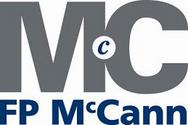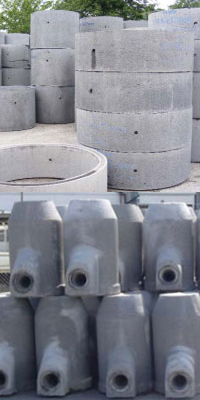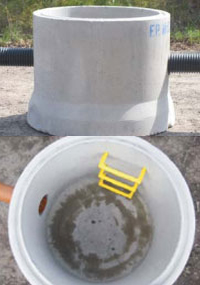We stock a full range of Precast Concrete Drainage Systems, including chamber rings, cover slabs and pipe. A full range of inspection chambers and gully pots are also stocked.

Concrete Drainage
Chamber Ring
Available in both Solid & Perforated
Sizes range from 900mm – 1800mm dia.
Step rungs included (except 900mm)
Heavy Duty Cover slabs
Available in all ring sizes with various openings including 600×600 and 675×675
Concrete pipes
Sizes range from 300mm to 600mm
Rockers, Socket Butts and Junctions available for all sizes
Gully Pots
Sized include 450x900mm, 450x750mm,
375x900mm and 375x750mm
Inspection Chambers
Available in 600×450, 750×600, 1000×675 and 1200x750mm
Stock in various depths including 150, 225 and 30

DN1050 Precast Catchpit
The DN1050 catchpit effectively provides a sealed sump manhole, a monolithic precast concrete unit fitted with connector seals which can be used to connect to the following types of pipe: uPVC, twinwall, clay, ductile iron and concrete. The catchpit is designed to accommodate pipe sizes DN150 to DN450. The catchpit is designed in line with highway specification.
FP McCann can produce catchpits up to DN375 in a straight through orientation (180 degrees). 4-way units with orientations at 90% degrees can be produced up to DN300 only, beyond DN300 4-way orientations are not available. DN450 inlets must be cored onsite
Benefits
- Creates an immediate watertight structure
- Cost benefits with reduction in construction time and resource requirement
- Economically advantageous as limited wet trades are required in the manhole construction
- Accommodates connection to all types of pipe used in road and manhole construction
- Safety benefits gained in the construction of manholes as the pre-formed sump and connector seals eliminate on site construction, thus greatly reducing labour activity within the manhole
- Increased confidence to meet industry standards
- Quality is greatly increased as construction is within the factory environment
- Eliminates material wastage associated with current in-situ method
- Yields environmental benefits with less concrete used on site and less excavated material removed from sit


